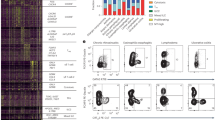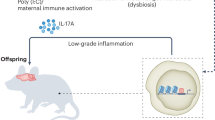Abstract
Renal involvement is the major cause of morbidity and mortality in lupus. Besides autoantibodies, intrinsic renal factors may contribute to the susceptibility to lupus nephritis. To determine how different mouse strains that develop spontaneous lupus fare in their susceptibility to immune mediated nephritis, mice from six lupus-prone strains and two non-lupus control strains (B6 and BALB/c) were challenged with rabbit anti-GBM sera. Among the strains tested, NZM2410 (or NZM) mice developed severe glomerulonephritis (GN), whereas BXSB and B6.lpr, NZB mice were relatively resistant to anti-GBM disease, as were the BALB/c controls. BWF1 and B6.Yaa mice exhibited intermediate degrees of GN that was comparable to the B6 controls. The severity of the renal disease in these strains did not appear to be related to the degree of the systemic immune response to the administered rabbit Ig. In addition, cytokine profiling demonstrated differential urinary excretion of several molecules in the NZM mice, compared with the controls. Together with our previous reports, our studies demonstrate that lupus-prone strains vary in their susceptibility to immune mediated nephritis, despite similar levels of circulating autoantibodies and comparable degrees of immune complex deposition in the kidneys.
This is a preview of subscription content, access via your institution
Access options
Subscribe to this journal
Receive 6 digital issues and online access to articles
$119.00 per year
only $19.83 per issue
Buy this article
- Purchase on Springer Link
- Instant access to full article PDF
Prices may be subject to local taxes which are calculated during checkout






Similar content being viewed by others
References
Petri M . Lupus in Baltimore: evidence-based ‘clinical pearls’ from the Hopkins Lupus Cohort. Lupus 2005; 14: 970–973.
Golbus J, McCune WJ . Lupus nephritis. Classification, prognosis, immunopathogenesis, and treatment. Rheum Dis Clin North Am 1994; 20: 213–242.
Ward MM, Pyun E, Studenski S . Mortality risks associated with specific clinical manifestation of systemic lupus erythematosus. Arch Intern Med 1996; 156: 1337–1344.
Yap DY, Tang CS, Ma MK, Lam MF, Chan TM . Survival analysis and causes of mortality in patients with lupus nephritis. Nephrol Dial Transplant 2012; 27: 3248–3254.
Andrews BS, Eisenberg RA, Theofilopoulos AN, Izui S, Wilson CB, McConahey PJ et al. Spontaneous murine lupus-like syndromes. Clinical and immunopathological manifestations in several strains. J Exp Med 1978; 148: 1198–1215.
Dixon FJ, Andrews BS, Eisenberg RA, McConahey PJ, Theofilopoulos AN, Wilson CB . Etiology and pathogenesis of a spontaneous lupus-like syndrome in mice. Arthritis Rheum 1978; 21: S64–S67.
Mohan C, Morel L, Yang P, Watanabe H, Croker B, Gilkeson G et al. Genetic dissection of lupus pathogenesis: a recipe for nephrophilic autoantibodies. J Clin Invest 1999; 103: 1685–1695.
Madaio MP, Carlson J, Cataldo J, Ucci A, Migliorini P, Pankewycz O . Murine monoclonal anti-DNA antibodies bind directly to glomerular antigens and form immune deposits. J Immunol 1987; 138: 2883–2889.
Liang Z, Xie C, Chen C, Kreska D, Hsu K, Li L et al. Pathogenic profiles and molecular signatures of antinuclear autoantibodies rescued from NZM2410 lupus mice. J Exp Med 2004; 199: 381–398.
Lefkowith JB, Gilkeson GS . Nephritogenic autoantibodies in lupus. Current concepts and continuing controversies. Arthritis Rheum 1996; 39: 894–903.
Hahn BH . Antibodies to DNA. N Engl J Med 1998; 338: 1359–1368.
Chan OT, Hannum LG, Haberman AM, Madaio MP, Shlomchik MJ . A novel mouse with B cells but lacking serum antibody reveals an antibody-independent role for B cells in murine lupus. J Exp Med 1999; 189: 1639–1648.
Waters ST, McDuffie M, Bagavant H, Deshmukh US, Gaskin F, Jiang C et al. Breaking tolerance to double stranded DNA, nucleosome, and other nuclear antigens is not required for the pathogenesis of lupus glomerulonephritis. J Exp Med 2004; 199: 255–264.
Fu Y, Du Y, Mohan C . Experimental anti-GBM disease as a tool for studying spontaneous lupus nephritis. Clin Immunol 2007; 124: 109–118.
Xie C, Zhou XJ, Liu X, Mohan C . Enhanced intrinsic susceptibility to end-organ disease in the lupus prone NZW strain. Arthritis Rheum 2003; 48: 1080–1092.
Xie C, Sharma R, Wang W, Zhou XJ, Mohan C . Strain distribution pattern of susceptibility to immune-mediated nephritis. J Immunol 2004; 172: 5047–5055.
Xie C, Rahman ZS, Xie S, Zhu J, Du Y, Qin X et al. Strain distribution pattern of immune nephritis—a follow-up study. Int Immunol 2008; 20: 719–728.
Xie C, Qin X, Jonnala G, Gong Y, Yan M, Zong P et al. Enhanced susceptibility to immune nephritis in DBA/1 mice is contingent upon IL-1 expression. Clin Immunol 2007; 124: 49–56.
Xie C, Liu K, Fu Y, Qin X, Jonnala G, Wang T et al. RANTES deficiency attenuates autoantibody-induced glomerulonephritis. J Clin Immunol 2011; 31: 128–135.
Fairhurst AM, Xie C, Fu Y, Wang A, Boudreaux C, Zhou XJ et al. Type I interferons produced by resident renal cells may promote end-organ disease in autoantibody-mediated glomerulonephritis. J Immunol 2009; 183: 6831–6838.
Li L, Mohan C . Genetic basis of murine lupus nephritis. Semin Nephrol 2007; 27: 12–21.
Xie C, Mohan C . SLE pathogenesis, Genetic dissection. In: Ganten D, Ruckpaul K, (eds) Encyclopedic Reference of Genomics and Proteomics in Molecular Medicine. Springer: New York, 2006, pp 1763–1768.
Liu K, Li QZ, Delgado-Vega AM, Abelson AK, Sánchez E, Kelly JA et al. Kallikrein genes are associated with lupus and glomerular basement membrane-specific antibody-induced nephritis in mice and humans. J Clin Invest 2009; 119: 911–923.
Morel L, Blenman KR, Croker BP, Wakeland EK . The major murine systemic lupus erythematosus susceptibility locus, Sle1, is a cluster of functionally related genes. Proc Natl Acad Sci USA 2001; 98: 1787–1792.
Morel L, Rudofsky UH, Longmate JA, Schiffenbauer J, Wakeland EK . Polygenic control of susceptibility to murine systemic lupus erythematosus. Immunity 1994; 1: 219–229.
Murphy ED, Roths JB . A Y chromosome associated factor in strain BXSB producing accelerated autoimmunity and lymphoproliferation. Arthritis Rheum 1979; 22: 1188–1194.
Izui S, Iwamoto M, Fossati L, Merino R, Takahashi S, Ibnou-Zekri N . The Yaa gene model of systemic lupus erythematosus. Immunol Rev 1995; 144: 137–156.
Pisitkun P, Deane JA, Difilippantonio MJ, Tarasenko T, Satterthwaite AB, Bolland S . Autoreactive B cell responses to RNA-related antigens due to TLR7 gene duplication. Science 2006; 312: 1669–1672.
Subramanian S, Tus K, Li QZ, Wang A, Tian XH, Zhou J et al. A Tlr7 translocation accelerates systemic autoimmunity in murine lupus. Proc Natl Acad Sci USA 2006; 103: 9970–9975.
Deane JA, Pisitkun P, Barrett RS, Feigenbaum L, Town T, Ward JM et al. Control of Toll-like receptor 7 expression is essential to restrict autoimmunity and dendritic cell proliferation. Immunity 2007; 27: 801–810.
Watanabe-Fukunaga R, Brannan CI, Copeland NG, Jenkins NA, Nagata S . Lymphoproliferation disorder in mice explained by defects in Fas antigen that mediates apoptosis. Nature 1992; 356: 314–317.
Hogarth MB, Slingsby JH, Allen PJ, Thompson EM, Chandler P, Davies KA et al. Multiple lupus susceptibility loci map to chromosome 1 in BXSB mice. J Immunol 1998; 161: 2753–2761.
Haywood ME, Hogarth MB, Slingsby JH, Rose SJ, Allen PJ, Thompson EM et al. Identification of intervals on chromosomes 1, 3, and 13 linked to the development of lupus in BXSB mice. Arthritis Rheum 2000; 43: 349–355.
Watson ML, Rao JK, Gilkeson GS, Ruiz P, Eicher EM, Pisetsky DS et al. Genetic analysis of MRL-lpr mice: relationship of the Fas apoptosis gene to disease manifestations and renal disease-modifying loci. J Exp Med 1992; 176: 1645–1656.
Schaefer L, Tsalastra W, Babelova A, Baliova M, Minnerup J, Sorokin L et al. Decorin-mediated regulation of fibrillin-1 in the kidney involves the insulin-like growth factor-I receptor and mammalian target of rapamycin. Am J Pathol 2007; 170: 301–315.
Schaefer L . Small leucine-rich proteoglycans in kidney disease. J AM Soc Nephrol 2011; 22: 1200–1207.
Yamaguchi Y, Mann DM, Ruoslahti E . Negative regulation of transforming growth factor- beta by the proteoglycan decorin. Nature 1990; 346: 281–284.
Perilo NL, Marcus ME, Baum LG . Galectins: versatile modulators of cell adhesion, cell proliferation, and cell death. J Mol Med 1998; 76: 402–412.
Ilarregui JM, Bianco GA, Toscano MA, Rabinovich GA . The coming of age of galectins as immunomodulatory agents: impact of these carbohydrate binding proteins in T cell physiology and chronic inflammatory disorders. Ann Rheum Dis 2005; 64: iv96–103.
Tsuchiyama Y, Wada J, Zhang H, Morita Y, Hiragushi K, Hida K et al. Efficacy of galectins in the amelioration of nephrotoxic serum nephritis in Wistar Kyoto rats. Kidney Int 2000; 58: 1941–1952.
Acknowledgements
Dr Chun Xie and Dr Kirthi Raman Kumar were supported by the National Arthritis Foundation. This work was support in part by an NIH grant.
Author information
Authors and Affiliations
Corresponding author
Ethics declarations
Competing interests
The authors declare no conflict of interest.
Rights and permissions
About this article
Cite this article
Xie, C., Du, Y., Kumar, K. et al. Lupus-prone strains vary in susceptibility to antibody-mediated end organ disease. Genes Immun 14, 170–178 (2013). https://doi.org/10.1038/gene.2012.57
Received:
Revised:
Accepted:
Published:
Issue Date:
DOI: https://doi.org/10.1038/gene.2012.57
Keywords
This article is cited by
-
T cells and autoimmune kidney disease
Nature Reviews Nephrology (2017)
-
Blockade of CD354 (TREM-1) Ameliorates Anti-GBM-Induced Nephritis
Inflammation (2016)



